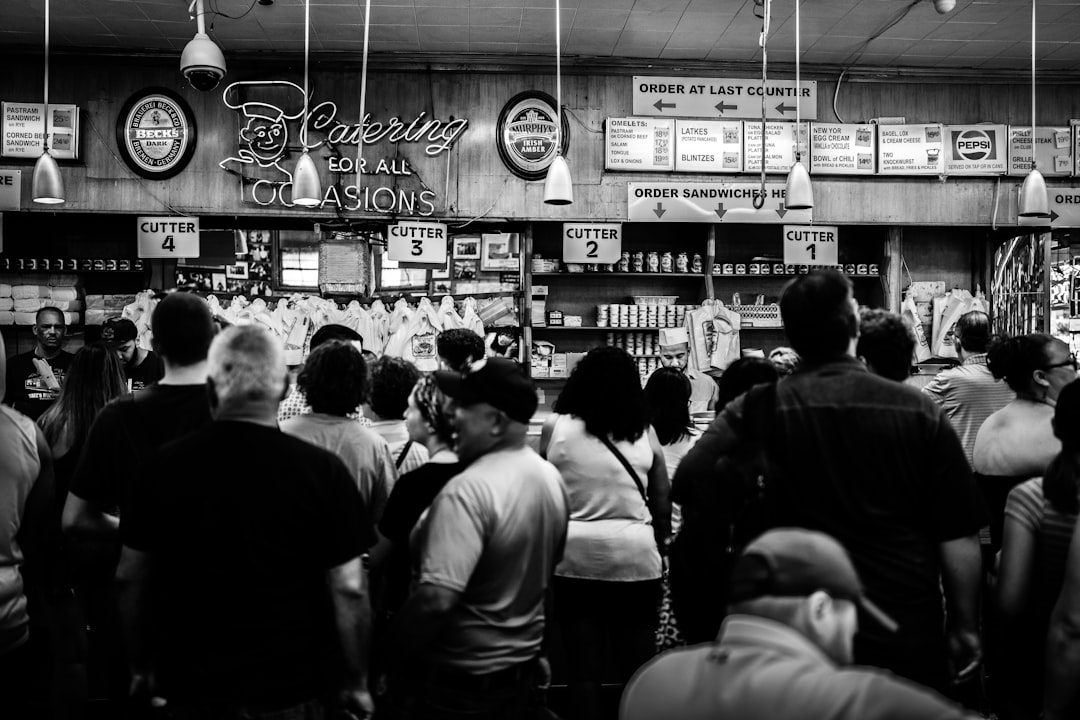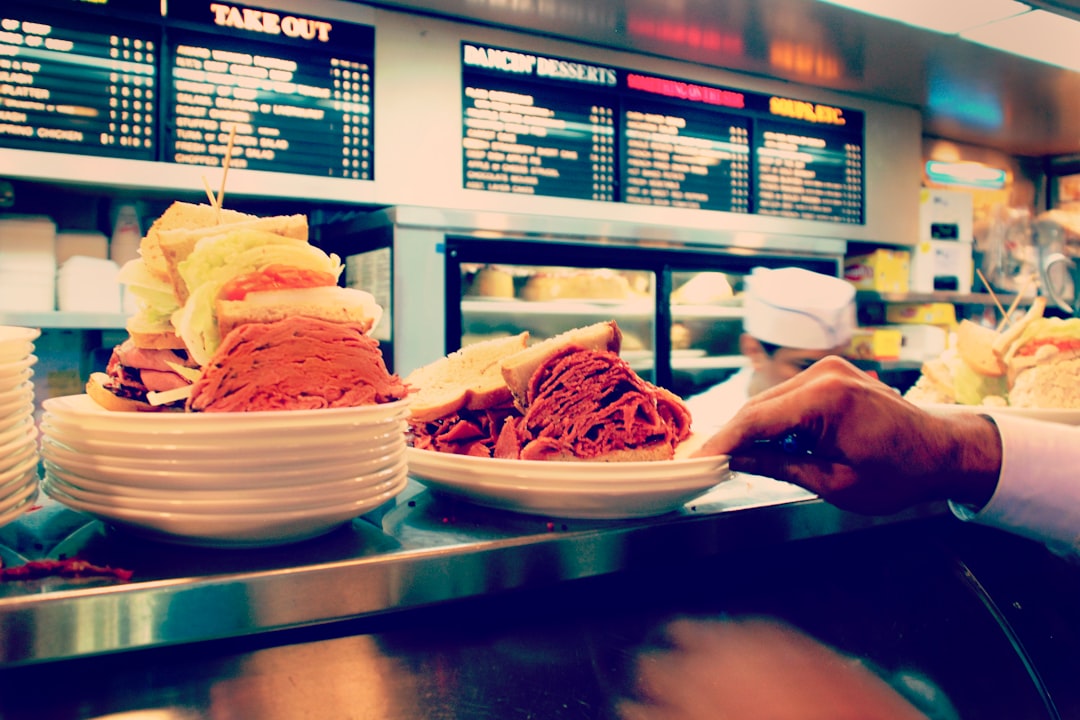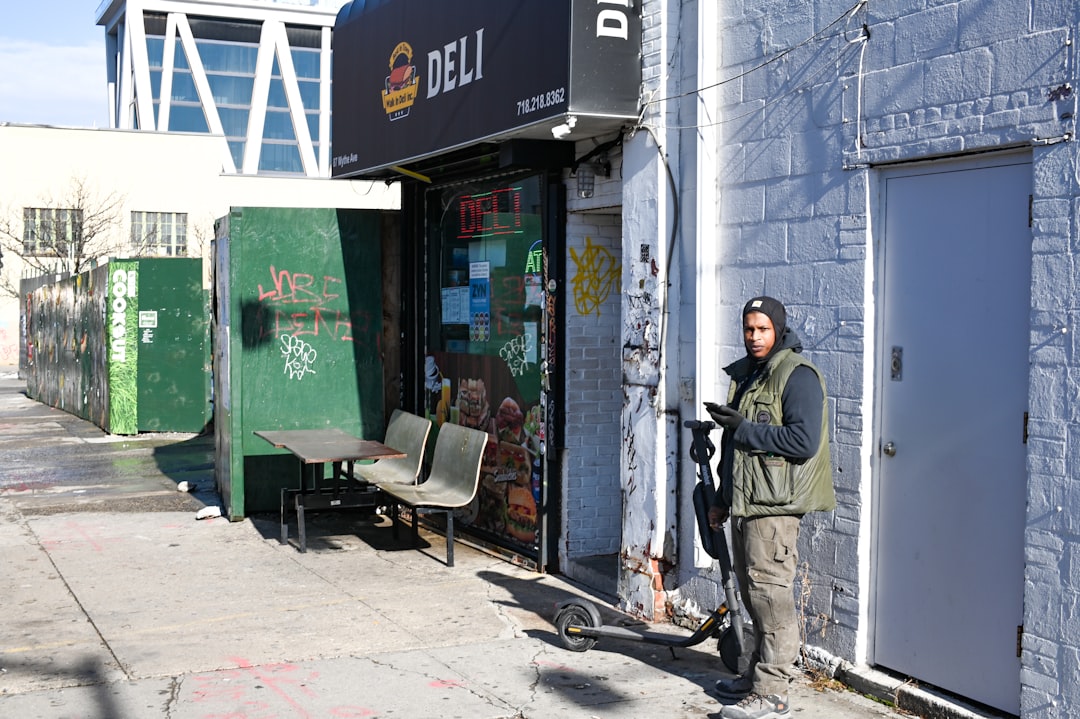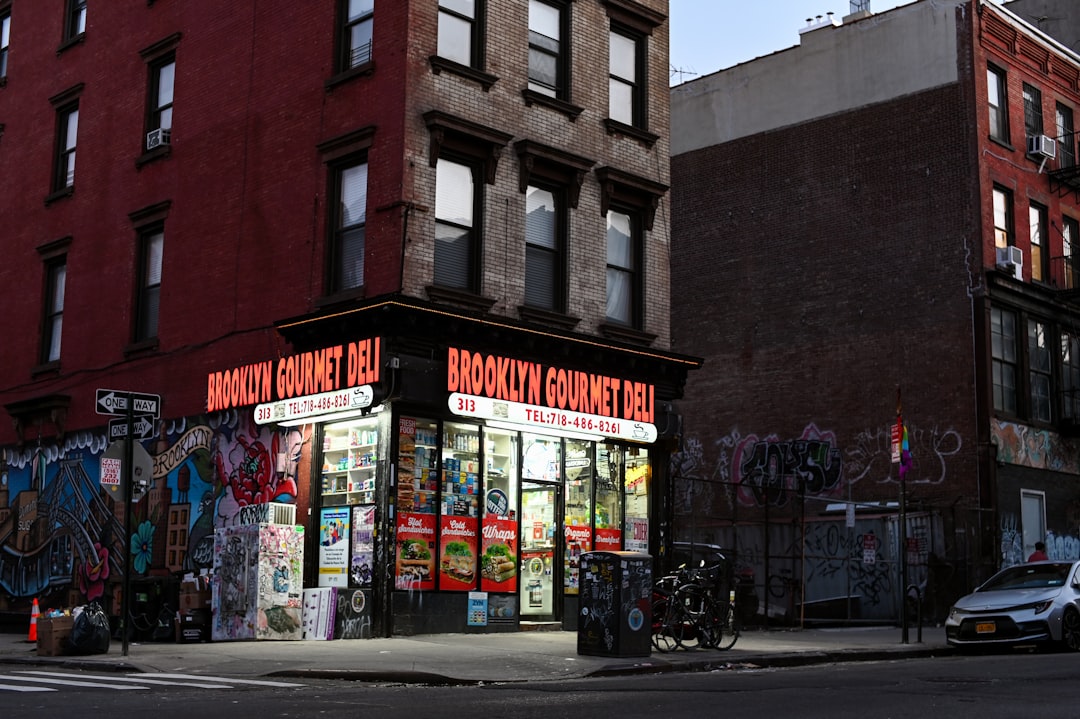

Engage prospects with a scan and streamline customer engagement with FREE QR code marketing tools by Sona – no strings attached!
Create a Free QR CodeFree consultation

No commitment

Engage prospects with a scan and streamline customer engagement with FREE QR code marketing tools by Sona – no strings attached!
Create a Free QR CodeFree consultation

No commitment
Delicatessens have long held a place of distinction, bridging tradition, community, and the evolving tastes of food lovers everywhere. From their historical European roots to their prominent role in cities across the world, delicatessens are celebrated for curated menus, fresh ingredients, and memorable in-store experiences. Yet today, deli owners contend with new pain points: missed opportunities to follow up with high-value patrons who remain anonymous after a visit, as outlined in Sona’s blog post titled The Essential Guide to Account Identification, outdated feedback processes that limit loyalty growth, and disconnected marketing messages that dilute customer relationships.
As consumer habits evolve toward digital ordering, personalized offers, and seamless experiences, many delis are searching for tools that deliver both modern convenience and timeless personal connection. QR codes in marketing are transforming how delicatessens engage customers, connect offline moments to digital actions, and drive measurable growth. Previously, valuable insights about interested guests often went uncaptured when transactions stayed offline or actions were not tracked past the counter.
QR-backed strategies let operators turn every counter visit, menu scan, and takeout bag into a meaningful touchpoint. They enable personalized follow-up, immediate feedback collection, and targeted rewards that close the gap between in-person and digital engagement. This playbook shows how QR code solutions empower delicatessen owners and marketers to replace outdated processes, streamline customer interactions, and harness actionable insights, unlocking new revenue opportunities while deepening loyalty among today’s connected diners.

For many delicatessens, persistent challenges like incomplete customer data, manual workflows, and low loyalty signup rates create barriers to growth. QR codes provide a fast, familiar way to connect physical environments with digital experiences that elevate engagement and reduce operational friction. When properly deployed, they help delis capture identifiable signals, activate timely follow-ups, and measure what works.
Start by mapping analog processes to QR-enabled journeys. Replace paper forms, outdated print menus, and manual signups with scan-to-action flows that customers can complete in seconds. Then define success metrics so you can prove impact and iterate quickly. Finally, use analytics to tie scans to business outcomes like reviews, orders, and enrollments. Platforms like Sona QR product overview are designed to support each step, from code creation and design to tracking, segmentation, and CRM sync.
Modern QR platforms such as Sona QR make it simple to create, deploy, and update QR campaigns across locations and media, while illuminating which touchpoints drive the most engagement and revenue.
Many beloved deli rituals remain firmly analog, but that does not mean they need to be inefficient. QR codes bridge the old and the new, preserving hospitality while injecting speed, accuracy, and traceability. By swapping manual steps for scan-to-action workflows, you capture more signals without slowing down operations or asking customers to install an app. For more food-service tactics, explore Sona QR’s industry hub.
Here are practical examples of legacy-to-digital transitions that pay off quickly:
When these analog processes go digital, delis see higher participation, better data capture, and faster response loops that help retain high-value customers.

Delicatessens often enjoy robust walk-in traffic, but many interactions end at the register and remain anonymous. That creates a data gap that limits loyalty growth, upsell precision, and marketing efficiency. QR codes let you transform fleeting in-store moments into longer digital relationships by making actions like joining a rewards program, reviewing a meal, or pre-ordering tomorrow’s lunch effortless.
In an era when convenience and personalization drive decisions, QR codes remove the friction of app downloads and cumbersome forms. They deliver a single-scan path to mobile ordering, tailored offers, and signups. Combined with dynamic content and analytics, QR campaigns help delis deploy, measure, and evolve promotions in real time, saving reprint costs and aligning outreach with what customers actually engage with.
Examples include QR codes on order slips for instant feedback or on catering cards that connect event guests to reorder forms. Each scan is an onramp to a measurable journey that nurtures loyalty and repeat business.

Delicatessens face a mix of daily needs: clear menus, fast ordering, easy contact exchange, and smooth feedback loops. Different QR formats address these scenarios with minimal overhead and maximum clarity. With dynamic options, you can refine destinations as campaigns evolve without altering the printed code.
Before choosing a format, clarify the desired action. A guest who scans a table tent might need the latest menu and specials, while a catering manager scanning a platter card might be ready to reorder or request a quote. Pair format and destination to match the customer’s context.
Dynamic QR codes managed through a platform like Sona QR let you change destinations on the fly, A/B test landing pages, and unify performance reporting across every code in one dashboard.

Finding the right placements starts with understanding your moments of highest intent. Delis experience dense, time-sensitive windows of attention: in line at lunch, browsing a case, waiting for pickup, or unpacking a catered tray at an office. Place QR codes where a simple scan can resolve friction or open a valuable next step.
Look for surfaces that already command attention, then attach a clear benefit to the scan. When someone is choosing a sandwich, the CTA can reveal a limited-time combo. When someone is paying, the CTA can offer a loyalty bonus. When someone is taking food away, the CTA can invite a review or future order.
By optimizing these placements with clear CTAs and trackable links, delis can capture previously anonymous interest, inform smarter retargeting, and convert more visits into repeat business.

Delis must identify what actually drives repeat visits, high-margin choices, and word of mouth. QR workflows reveal these patterns by translating everyday interactions into measurable digital actions. When you connect a scan to a known person and a specific intent, you can follow up with the right message at the right time.
Start with high-frequency interactions and low-effort wins. Then layer in loyalty mechanics, post-purchase prompts, and catering capture points. Over time, you will build a richer view of your customer base and what gets them to convert.
Every scan is a signal. It captures intent, context, and timing, all of which are useful for segmenting your audience and crafting relevant follow-ups. By deploying distinct QR codes across awareness, consideration, and purchase moments, you can auto-build lists that map to the buyer journey and fuel targeted campaigns through email, SMS, and paid media.
The key is to tag scans by use case, placement, and time of day. Then push these segments into your CRM and ad platforms to trigger the next best action. With a solution like Sona QR, these steps can be automated from the moment a scan occurs.
This segmentation gives delis a practical way to prioritize retention, cross-sell, and upsell, while reducing wasted spend on generic outreach.
Disconnected campaigns lead to mixed messages and missed opportunities. QR codes serve as connectors, turning physical media and in-store conversation into digital pathways that can be tracked, attributed, and improved. By adding smart codes to menus, signage, and packaging, you unify the customer experience and make engagement measurable.
With a centralized platform, you can manage codes across placements, update destinations as offers change, and pull all performance data into a single view. This creates a closed-loop system that spans print, social, email, events, and delivery partners.
Centralized analytics through Sona QR fuse all these touchpoints into a single funnel view, helping you double down on channels and placements that generate engagement and revenue.
Begin by pinpointing the most valuable outcome for your deli right now. Examples include launching a new menu item, increasing review volume after a service improvement, or capturing catering leads from office orders. Clarify the specific action you want a customer to take after scanning, such as Join our rewards, Rate your lunch, or Get a catering quote.
Map your QR deployment to the customer journey to maximize convenience. If you want reviews, place codes on bags and receipts. If you want catering interest, feature codes on in-store signage near the register and on platter labels. Ensure the benefit is immediate and relevant to the moment of scanning so customers do not hesitate.
Choose dynamic QR codes for campaigns that require frequent updates, attribution, and flexible targeting. Dynamic codes let you change destinations post-print, run A/B tests, add UTM parameters, and capture device and location data. Use static codes for evergreen assets like your homepage or a PDF of a signature recipe that will not change.
Consider the format that best fits the action. A web link is ideal for menus and landing pages, SMS for quick inquiries, vCards for contact exchange, and Wi-Fi for easy access to your network. Align format and content with both the environment and the device experience to reduce friction.
Design with clarity and scannability in mind. Add a short, benefit-driven call to action near the code, such as Scan for today’s soup or Scan to join and get 10 percent off. Use a branded frame and colors that contrast well with the background. Keep adequate quiet space around the code, and size it for the viewing distance.
Test rigorously before mass printing. Check scannability across iOS and Android, different device generations, varied lighting, glossy and matte surfaces, and natural scanning distances. Adjust contrast, size, and placement until performance is reliable in real-world conditions.
Roll out the campaign where it will have the most immediate effect. Prioritize counters, takeout bags, grab-and-go wrappers, window signage, and catering materials. Match each placement with a context-aware destination. For example, window codes after hours can lead to pre-order pages, and takeout codes can prompt ratings or reorder incentives.
Coordinate messaging across assets so customers encounter a consistent experience. Use unique codes for each placement to track which channels perform best. If feasible, train staff to mention the scan benefit briefly during checkout to increase participation without slowing the line.
Connect your codes to analytics from day one. With Sona QR, track scans by time, location, device, and campaign source. Add UTM parameters so web analytics attribute traffic correctly. Review conversion behavior and identify drop-off points in the journey to prioritize improvements.
Run A/B tests on CTAs, landing pages, and incentives. Replace underperforming placements and creative quickly, and scale up the winners. Close the loop by syncing scan data to your CRM so you can measure downstream effects like repeat purchases, catering quotes, or loyalty milestones.
Limited visibility into post-visit behavior has long hindered deli growth. Knowing that a code was scanned is helpful, but real insight comes from connecting that scan to downstream actions like form fills, orders, and loyalty milestones. This is where modern QR analytics provide the missing link between awareness, engagement, and revenue.
A robust stack does more than count scans. It measures where and when scans occurred, attributes them to specific assets, and syncs activity into your CRM for lifecycle tracking. For measurement across print and in-store media, see Sona’s blog post titled The Essential Guide to Offline Attribution. When combined with identity resolution, you can connect anonymous scans to known buyers and understand how QR engagement contributes to pipeline and sales.
The outcome is a data-driven feedback loop that lets delis invest with confidence, focusing resources on the placements and messages that lead to measurable growth.
QR codes work best when they are specific, visible, and instantly valuable. Treat each code as a miniature campaign with a clear goal, a compelling benefit, and a measurable outcome. Then layer automation to keep momentum after the scan.
Choose tactics that match your most common physical media. For delis, that often means menus, counters, bags, and cases. Reinforce the digital journey with friendly staff prompts and visible signage so scanning becomes a natural part of the experience.
You can generate and track your first QR codes for free with Sona QR. Start creating QR codes for free to launch measurable campaigns in minutes and sync activity with your CRM for automated follow-up.
Creative QR deployments help delis capture attention, delight guests, and learn what drives conversion. The most effective ideas pair a fun or exclusive experience with a meaningful next step such as loyalty enrollment, a reorder, or a review.
These scenarios illustrate how small digital upgrades can unlock significant value without disrupting the in-store vibe that customers love:
These use cases demonstrate how QR codes can capture intent, enrich contact lists, and turn everyday impressions into lasting relationships.
Successful QR campaigns share a few core traits: strong CTAs, thoughtful placement, and reliable tracking. On the flip side, the most common failures come from poor visibility, unclear benefits, and unreliable scanning conditions.
Plan for the environment. Delis often have glossy surfaces, mixed lighting, and fast-moving lines. Anticipate these realities and design accordingly so guests can scan quickly and comfortably without holding up service.
Anticipating these pitfalls preserves scan rates, protects guest experience, and builds a reliable foundation for long-term loyalty and revenue.
QR codes have become essential tools for delicatessen operators who want to turn each offline encounter into a future engagement opportunity. By connecting menus, packaging, events, and local marketing to actionable digital experiences, delis align the craft of great food with the speed and personalization today’s diners expect. The result is a connected journey where first-time visitors, regulars, and corporate clients advance from awareness to conversion with less friction and more delight.
Embracing QR codes helps delis overcome the persistent challenge of anonymous, missed opportunities while honoring the authenticity and community connection that make the category special. Through digital menu access, streamlined loyalty, targeted promotions, and comprehensive analytics, every touchpoint becomes a source of insight and a chance to deepen relationships. With Sona QR for code creation and tracking, and Sona.com for attribution and unified buyer journeys, you can capture demand at the source and convert it into measurable results. Now is the time to integrate QR strategies into your deli playbook to deliver elevated experiences, sustained loyalty, and a modern edge in a competitive market.
QR codes have revolutionized delicatessens by transforming traditional customer interactions into dynamic, trackable engagement opportunities. Whether it’s attracting new patrons, enhancing in-store experiences, or streamlining special promotions, QR codes enable delicatessens to connect with customers instantly and gather valuable insights that drive growth. Imagine knowing which menu items spark the most interest or which seasonal offers boost repeat visits—all in real time.
With Sona QR, delicatessens can effortlessly create dynamic, customizable QR codes that update instantly without the need to reprint materials. Every scan becomes a measurable touchpoint linked directly to customer behavior and revenue, allowing you to optimize campaigns and deliver personalized experiences that keep shoppers coming back. Start for free with Sona QR today and turn every QR scan into a meaningful connection that grows your delicatessen’s success.
QR codes help delicatessens capture customer data, enable personalized follow-up, collect instant feedback, streamline loyalty programs, reduce printing costs, and provide measurable engagement that drives revenue and repeat business.
QR codes offer customers instant access to dynamic menus, easy loyalty signups, fast ordering, and feedback submission without app downloads, creating seamless, convenient, and personalized interactions.
Effective campaigns include digital menus, loyalty program signups, instant feedback forms, catering inquiries, instructional content, and promotional offers placed at points of sale, packaging, windows, and catering materials.
Use a dynamic QR code platform to create a scannable code linking to your digital menu that can be updated instantly; design it with a clear call to action and test scannability before deployment.
Creative uses include sharing story content about ingredients or chefs, providing reheating instructions on catering platters, enabling quick Wi-Fi access for dine-in guests, and facilitating contact exchanges with suppliers and event planners.
Use Sona QR's trackable codes to improve customer acquisition and engagement today.
Create Your FREE Trackable QR Code in SecondsJoin results-focused teams combining Sona Platform automation with advanced Google Ads strategies to scale lead generation

Connect your existing CRM

Free Account Enrichment

No setup fees
No commitment required

Free consultation

Get a custom Google Ads roadmap for your business






Launch campaigns that generate qualified leads in 30 days or less.
